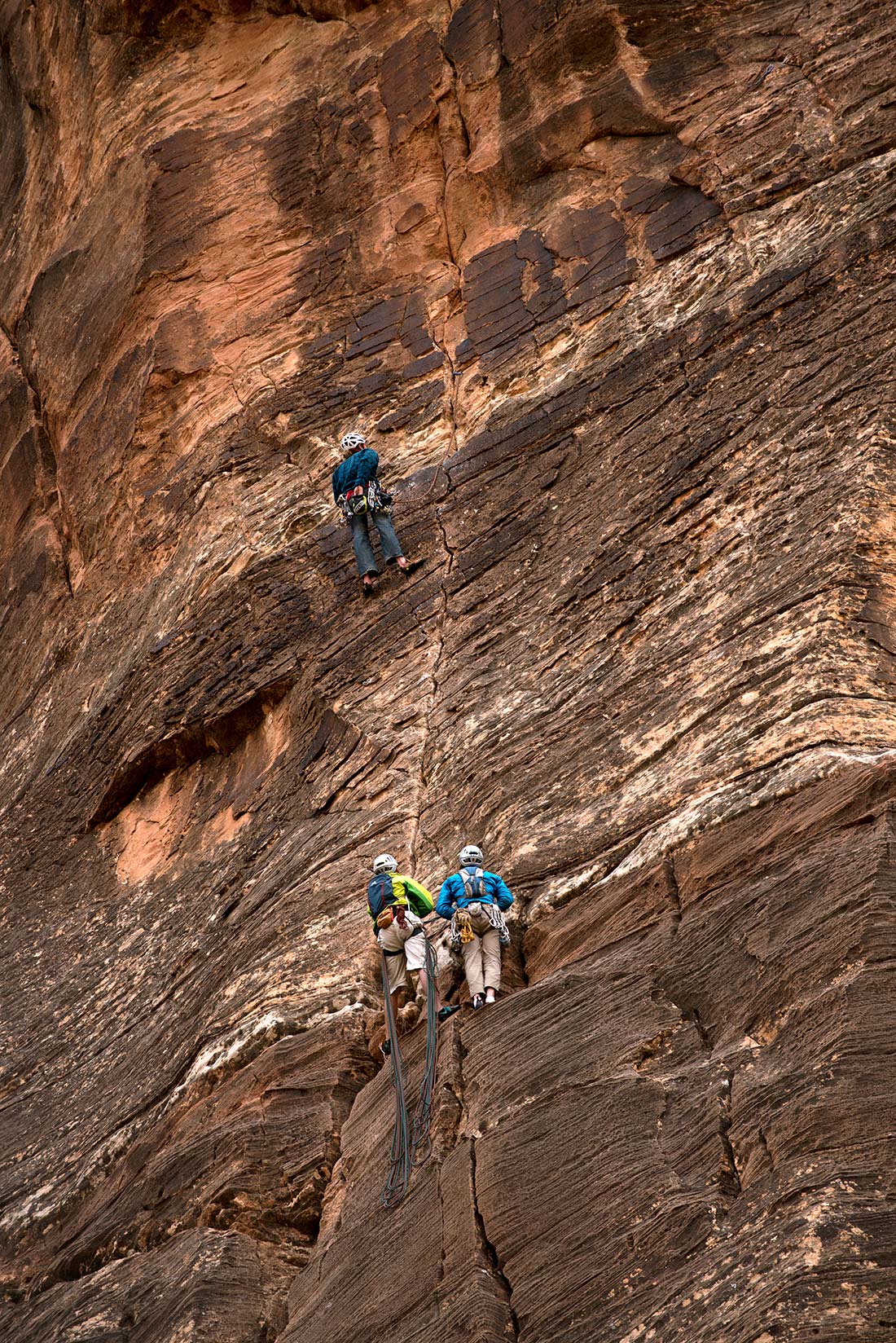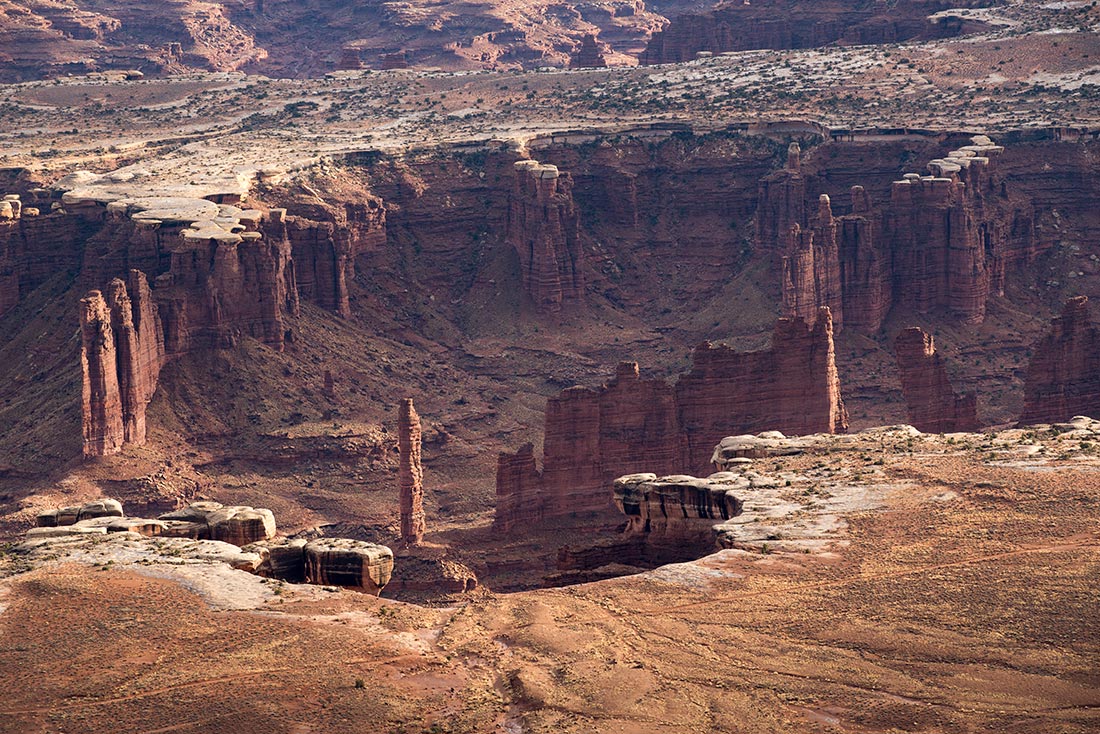Visit Utah’s National Parks
Photos by Forrest Anderson
Utah’s five magnificent national parks are open for business despite the government shutdown, partly because Utah state, county and city governments and nongovernmental organizations are chipping in to keep park workers on the job.

One of the perks of visiting Arches National Park in the winter is fewer people.
The five parks – Zion, Arches, Capitol Reef, Bryce Canyon and Canyonlands - are not just priceless national treasures. The more than 15 million tourists who visit them and other national monuments and historical sites in the state annually inject more a billion dollars into the state’s economy, according to a 2018 report by the National Park Service. The parks support about 255,000 jobs in related industries such as hotels, retail stores, transportation and recreation.
That makes it worthwhile for the state as well as local county and city governments and nongovernmental organizations to ensure the parks remain open and a pleasant experience for tourists. Tourism involving the parks has grown by 66 percent over the past decade and has doubled at Zions to reach 4.5 million annually. Zion is the third most visited park in the United States behind the Smoky Mountains National Park in Tennessee and the Grand Canyon.

Zions National Park is open for visitors, although the shuttle is not running.
Bryce Canyon, Arches and Capitol Reef visitors also have increased their attendance, attracted by Utah’s state-funded Mighty 5 advertising campaign and local tourism office advertising.
The state of Utah is paying to staff the visitor centers at Arches, Bryce Canyon and Zion parks during the shutdown, and Republican Gov. Gary Herbert has declared that people who have planned for a trip to Utah for months and traveled from all over the world will be greeted with magnificent vistas and welcoming people, not locked doors.
This isn’t the first time the state has done so – it contributed almost $1 million to keep the parks operating during the 2013 government shutdown, an amount which the federal government never paid back.
What will you encounter if you visit the parks in the winter?
- Moderate temperatures in southern Utah mean the parks still attract hikers, bicyclers and motorists throughout the winter. The temperatures are generally between 20 and 50 degrees F in most of the parks, although they can drop to 0 degrees F at Bryce Canyon. The moderate temperatures can actually be more comfortable than summer temperatures at the parks.
- The parks are substantially less crowded than in the summer.
- Visitors centers are open at Arches, Bryce Canyon and Canyonlands (Islands in the Sky District) through January 30, and at least through January 16 at Zion. The dates could be extended depending on the length of the government shutdown and funding donations.
- Snow removal services in some parks could be limited, causing unexpected road closures. This is not so unusual, as some high-country roads in the parks are typically closed anyway when weather condition are dangerous. Visitors are advised to heed weather warnings and keep informed about weather conditions in the parks. It is a good idea to have snow tires and a four-wheel drive is essential on back country roads.

Visitors are advised to be careful on snowy roads, such as this one in Zion National Park.
- Camping in the parks is limited because of the shutdown, so the website visitutah.com has listed nearby camping alternatives at state parks in the same areas as the national parks. For example, visitors to Arches National Park can find camping facilities at Dead Horse Point State Park.
- Visitors have been advised to be very careful while hiking, bicycling and rock climbing, as the staff available to respond to accidents is limited.

- Shuttle service at Zion National Park is not available during the shutdown although the park is still open.
- The parks are very different environments during the winter, especially when there is a dusting of snow, and the photography can be spectacular. Winter mists, snowcapped mountains in the distance and trails with just a few other hikers on them rather than the long lines that snake along them in the summer are some of the perks of visiting the parks at a less busy time.

This photo and the next show the spectacular scenery during the winter at Bryce Canyon National Park...

and, below, in Canyonland National Park.




Canyonlands National Park at twilight on a winter day.
More National Park photos
Check out these related items

The Road Less Traveled
There's an alternative to the standard boring I-15 southern and I-80 northern routes across Nevada.

Utah’s Rock Stars
Utah's spectacular scenery harbors one of the world's most complete and diverse dinosaur fossil records.

Springtime in the Rockies
It's springtime in Utah's Rockies. Photographer Forrest Anderson captured the stunning scenery.

The Wasatch Back
The Wasatch Back is the chief year-round playground for residents of the booming Wasatch Front in Utah.

Home is Where the Vacation is
Vacationing at home looks to be the main travel trend for the near future. Here are some ways to enjoy it.

